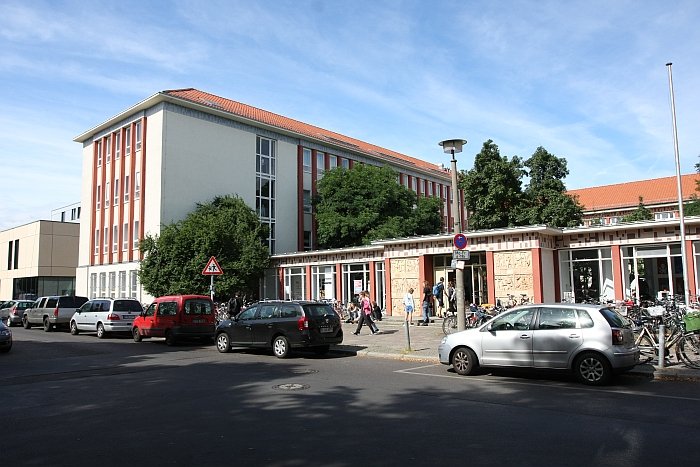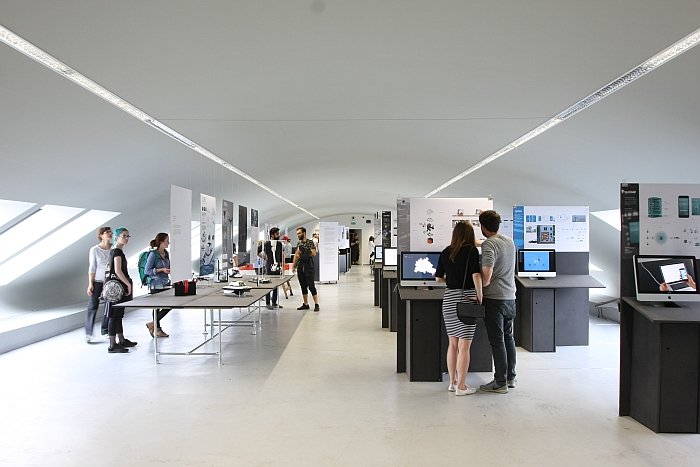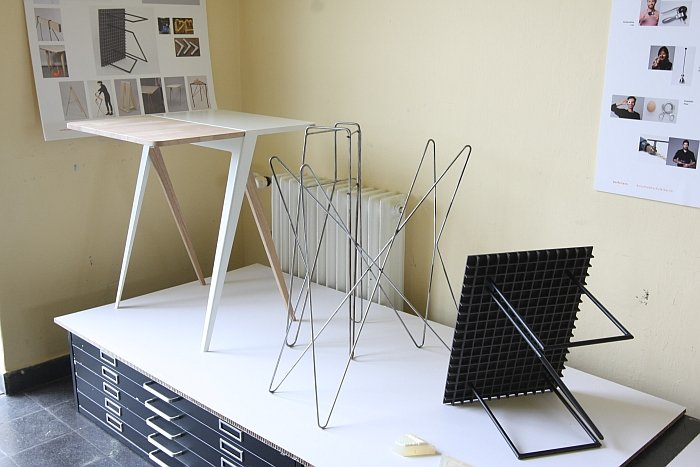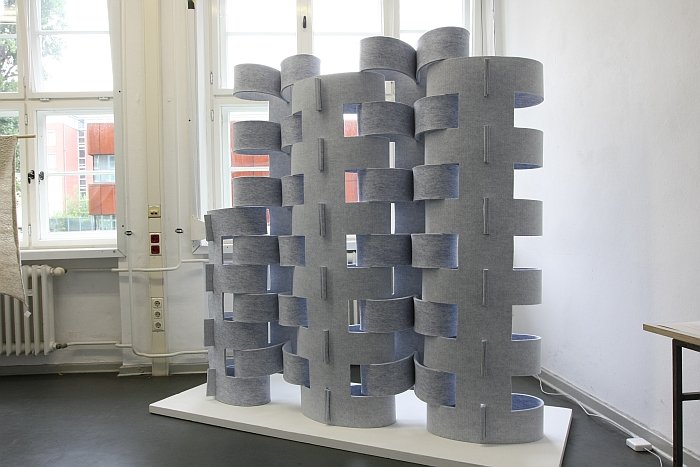As East Berlin's Art and Design College the Kunsthochschule Berlin Weissensee was in many ways symbolic of East Germany's difficult relationship with Bauhaus and the legacy of inter-war functionalism. On the one hand the DDR needed the reduced, cost effective, mass-market, industrial objects striven for during the period. On the other a need to define a new, socialist, tradition for the new, socialist, state meant an almost dogmatic rejection of everything associated with the pre-war "Germany", of anything and everything considered "capitalist". Including functionalism. But then Bauhaus was closed by the Nazis, many functionalists, whether Bauhaus alumni or not, were banned from working and thus many choose to emigrate, as such Bauhaus and functionalism had relevant, anti-fascist propaganda value.
Thus while in the immediate post-war years functionalists were positively encouraged in the DDR, with the start of the so-called Functionalism Debate in the early 1950s they soon found their work denounced as a "weapon of imperialism", before in the second half of the 1950s such resistance faded and ultimately gave way to the pressures of social and economic reality.
And so it came to pass that in 1950 the Dutch architect and designer Mart Stam was appointed Rector of the Kunsthochschule Berlin Weissensee, before departing in 1952 under conditions which couldn't exactly be termed as "friendly", even terming them "hostile" would underplay the nature of the relationship which had developed between Stam and the DDR authorities by late 1952. However in 1955 the Kunsthochschule Berlin Weissensee's then Professor of Architecture, and holder of Bauhaus Diploma Number 100, Selman Selmanagić, created an extension for the college: an extension that remains in use today, and which is in many ways symbolic of East Germany's difficult relationship with Bauhaus and the legacy of inter-war functionalism.

Established in 1946 as a pure art school, the institution's programme was extended in 1947 to incorporate applied arts and architecture and thus, effectively, establishing the Kunsthochschule Berlin Weissensee, KHB Weissensee, we know today. During Mart Stam's short tenure at the KHB Weissensee a further, key, component of the KHB Weissensee philosophy was established: a universal introductory course on the basics of art and design to be undertaken jointly by students of all disciplines, be that art or design. A practice reminiscent in many ways of Bauhaus and a practice that remains in force today, which constitutes the first two semesters of all courses and thus is the foundation of all studies at Weissensee. A further central feature of the KHB Weissensee is the workshops, workshops which range from traditional technical wood and metal workshops over modern technical workshops, for example, CAD, film and photo workshops and on to more applied workshops such as those for printing, bronze casting or textiles, workshops which exist independently of the departments and which students from all disciplines are free to use as and when required.
What this approach means for the contemporary product design education at the KHB Weissensee, and how the students respond to the cross discipline approach could be reviewed at the Kunsthochschule Berlin Weissensee 2016 Rundgang.

As a relatively small design school, the annual Rundgang semester exhibition at the Kunsthochschule Berlin Weissensee is traditionally a compact, concise affair and the 2016 edition was no different. In addition to presenting a selection of the most recent Master and Bachelor projects the 2016 Rundgang also presented the results of selected semester courses, from which we were particularly taken by Stab-il with Professor Susanne Schwarz-Raacke and which sought concepts for simple "bases" - for example for tables - which can be quickly assembled and dissembled, and a course which produced a couple of interesting positions. And one very, very interesting idea, an idea so pleasing it still causes us to wake up in the middle of the night smiling. Sadly we've yet to find out by whom, and so will say now more. For now.

In addition, and neatly demonstrating that at such exhibitions one should always move outwith your comfort zone and explore subject areas that you wouldn't normally dream of approaching, we were very taken with Merging Loops, the Textile & Surface Design Bachelor Project by Bára Finnsdóttir.
Essentially an acoustic panel/room divider concept Merging Loops does things we've, quite frankly, never experienced before, and does them in very competent, satisfying and practical ways. Conceived as being either a modular free-standing or a ceiling attached, curtain/blind, system, the Merging Loops panels are essentially flat, can however be folded in on themselves, merged one could say, and thus allow for the individual and ever variable definition and delineation of space, and thus creation of individual and ever variable room micro-architectures. Aside from the practicality of the functionality, and in the case of the free standing version the simplicity of the inter-panel connections, the free standing versions can be stored flat when not needed, a genuine bonus. We see a lot of such acoustic/divider/room-in-room solutions, Merging Loops is one of those that will remain with us for a while to come yet, one in which we see a lot of capacity for further development, and it is certainly to be hoped that Bára is able to take the project further.
All in all a very informative and entertaining presentation, if we did have one complaint it was the date. Traditionally the KHB Weissensee Rundgang takes place parallel to that at the UdK Berlin and FH Potsdam, thus allowing for a very pleasant couple of art and design days in Berlin and Brandenburg. This year the Weissensee Rundgang was a week before the other two. Not good. Not practical. Not something we hope is repeated next year.
More information on the Kunsthochschule Berlin Weissensee can be found at www.kh-berlin.de
